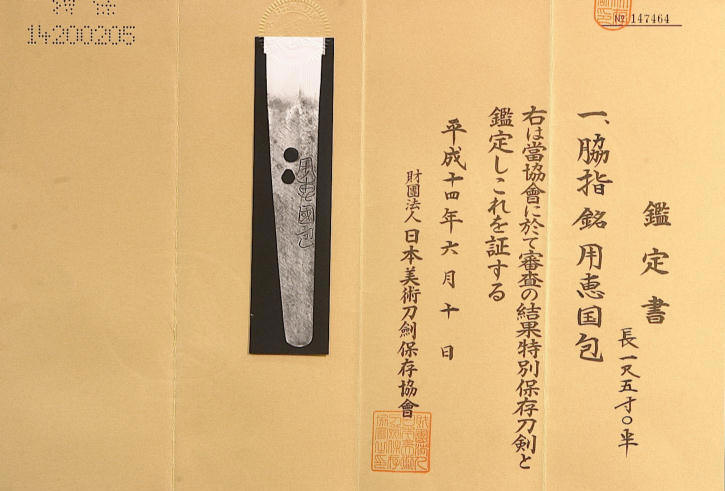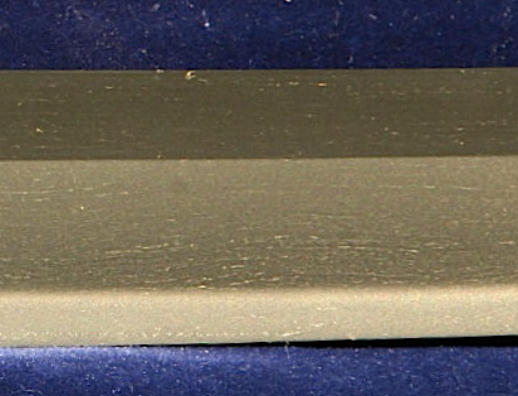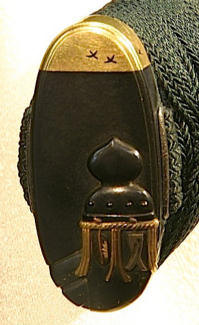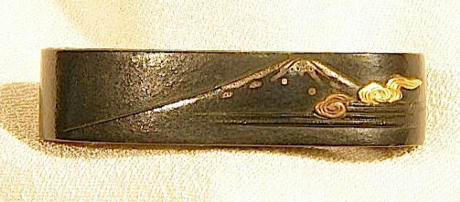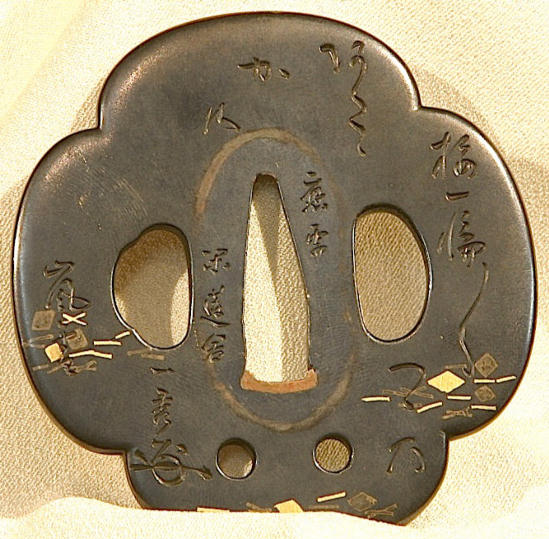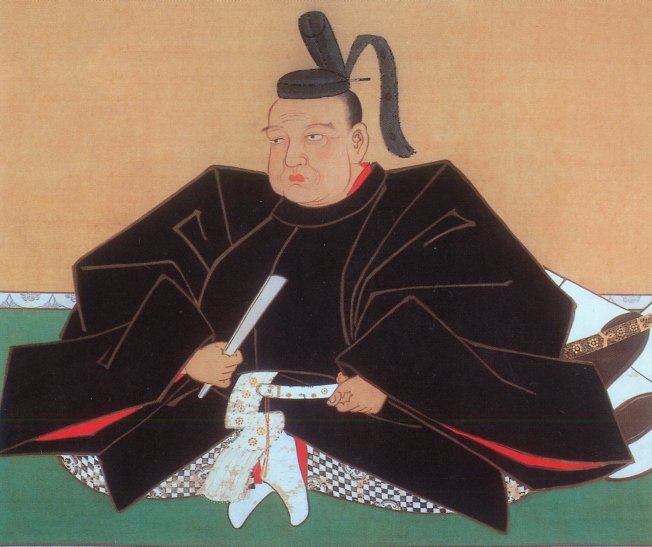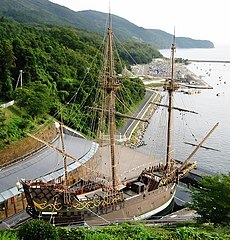Gallery Page (Display Only)
1st Generation Kunikane
Famous for some of the highest quality and sharpest blades
ever produced during the Shinto Era.
Worked around 1624 AD.
One of the most famous sword smiths in the Shinto Period
Worked for Date Masamune (Famous Daimyo)
Listed in Fujishiro’s
Certified Tokubetsu Hozon by the N.B.T.H.K.
This Japanese sword by Yōkei Kunikane is shodai (1st Generation). Kunikane lived Kokubu Wakabayahi (Sendai Jōka, a town below the Sendai Castle), and he is said to be the last descendant of Hoshō Sadamune. In the beginning his was Genzō, and this was later changed to Hongo Kichinosuke. At the command of Date Masamune Kunikane went to Kyoto and entered the Mon of Kyō Etchu no Kami Masatoshi. In the next year, in Genna (Genwa) Gannen Shigatsu (1615 1st year 4th month), the battle of Osaka came about, and Kunikane returned to his kuni and practiced the trade of swordsmithing. It is said that in the second year of the same era (1616) he again entered the Mon of Masatoshi, ended his apprenticeship in the fifth year of this same era (1619) and returned. It is said that he received the title of Yamashiro no Daijō in Kan’ei Yonen (1627), but this is already seen in his works of Kan’ei Sannen in (1626). For this reason, his receiving the title must be in accordance with his works. He became a lay priest in Kan’ei Jūgonen (1638) and was named Yōkei. In Shōhō Ninen (1645) he turned over his business to his chakushi Kichizamemon and retired. He passed away in Kanbun Yonen (1664) Jūnigatsu at 73. His works have a high shinogi, beautiful masame hada, itame hada, komidare hamon, hamon medium suguba with sunagashi entwined in the hada, and the bōshi is in the yakizume style.
Masamune and Kunikane are equals in quality as each are rated Sai Jō Saku (the highest rating) – “Most Superior Made” in Fujishiro’s. Rated at 80 points in Hawley’s Japanese Swordsmiths. His blades are rated “Saijō Ōwazamono” (Upper Best Supreme Sharpness)
~ Sayagaki (written opinion) translation ~
By: Kando Kakudo, Showa 35 (1960)
(Wrote for the Token to Rekishi, The N.T.H.K. Journal that we know today. Reference)
Both tsuba and habaki are signed by Kazuhide (also read as Isshu), with his Kakihan.
Both tsuba and habaki also have a written poem in grass writing.
Date Masamune ~ Daimyo
It is noted in Fujishiro’s that Yokei Kunikane was under command of Date Masamune (pictured above) and was ordered to Kyoto and entered the Mon of Kyō Etchu no Kami Masatoshi. Date Masamune is one of the most famous samurai for his period and even has a book that is still in publication today.
Date Masamune (伊達 政宗) (September 5, 1567 – June 27, 1636) was a Japanese samurai of the Azuchi-Momoyama period through early Edo period. Heir to a long line of powerful daimyo in the Tohoku region, he went on to found the modern-day city of Sendai. An outstanding tactician, he was made all the more iconic for his missing eye, for which he was often called dokuganryū (独眼竜), or the “one-eyed dragon.”
Date Masamune was the eldest son of Date Terumune, born in Yonezawa Castle (in modern Yamagata Prefecture). At the age of 14 in 1581 Masamune led his first campaign, helping his father fight the Sōma family. In 1584, at the age of 18, Masamune succeeded his father, Terumune, who chose to retire the position of daimyo. The Date family was founded in the early Kamakura period by Isa Tomomune, who originally came from the Isa district of Hitachi Province (now Ibaraki Prefecture). The family took its name from the Date district (now Fukushima Prefecture) of Mutsu Province, which had been awarded to Isa Tomomune by Minamoto no Yoritomo, the first Kamakura shogun, for his assistance in the Minamoto-Taira War (1180–85) and in Minamoto no Yoritomo’s struggle for power with his brother, Minamoto no Yoshitsune.
Tokugawa Ieyasu awarded Masamune the lordship of the huge and profitable Sendai domain, which made Masamune one of Japan’s most powerful daimyo. Tokugawa had promised Masamune a one million koku domain, but, even after substantial improvements were made, the land only produced 640,000 koku, most of which was used to feed the Edo region. In 1604, Masamune, accompanied by 52,000 vassals and their families, moved to what was then the small fishing village of Sendai. He left his fourth son, Date Muneyasu, to rule Iwadeyama. Masamune would turn Sendai into a large and prosperous city.
Masamune expanded trade in the otherwise remote, backwater region of Tohoku. Although initially faced with attacks by hostile clans, he managed to overcome them after a few defeats and eventually ruled one of the largest fiefdoms of the later Tokugawa shogunate. He built many palaces and worked on many projects to beautify the region. He is also known to have encouraged foreigners to come to his land. It is unlikely that Masamune himself was secretly a Christian convert. Even though he funded and promoted an envoy to establish relations with the Pope in Rome, he was likely motivated at least in part by a desire for foreign technology, similar to that of other lords, such as Oda Nobunaga. Further, once Tokugawa Ieyasu outlawed Christianity, Masamune reversed his position, and though disliking it, let Ieyasu persecute Christians in his domain. For 270 years, Tohoku remained a place of tourism, trade and prosperity. Matsushima, for instance, a series of tiny islands, was praised for its beauty and serenity by the wandering haiku poet Matsuo Bashō.
He showed sympathy for Christian missionaries and traders in Japan. In addition to allowing them to come and preach in his province, he also released the prisoner and missionary Padre Sotelo from the hands of Tokugawa Ieyasu. Date Masamune allowed Sotelo as well as other missionaries to practice their religion and win converts in Tohoku.
Masamune’s greatest achievement was funding and backing one of Japan’s few journeys of far-flung diplomacy and exploration in this period. He ordered the building of the exploration ship Date Maru or San Juan Bautista, using foreign (European) ship-building techniques. He sent one of his retainers, Hasekura Tsunenaga, Sotelo, and an embassy numbering 180 on a successful voyage to establish relations with the Pope in Rome. This expedition visited such places as the Philippines, Mexico, Spain and Rome, making it the first Japanese voyage to sail around the world. Previously, Japanese lords had never funded this sort of venture, so it was probably the first successful voyage. At least five members of the expedition stayed in Coria (Seville) of Spain to avoid the persecution of Christians in Japan. 600 of their descendants, with the surname Japón (Japan), are now living in Spain.
When the Tokugawa government banned Christianity, Masamune had to obey this law. However, some source suggested Masamune’s eldest daughter, Iroha was a Christian.
This Sword is not available for purchase.
If you wish to purchase a Japanese Sword please view our Nihonto for sale page or contact us directly via email or contact us at 1(608) 315-0083 any time, please include specifics of what you seek, i.e.: Katana, maker, era, price range etc.
Pictures and content may not be copied without the express permission of samuraisword.com ©


